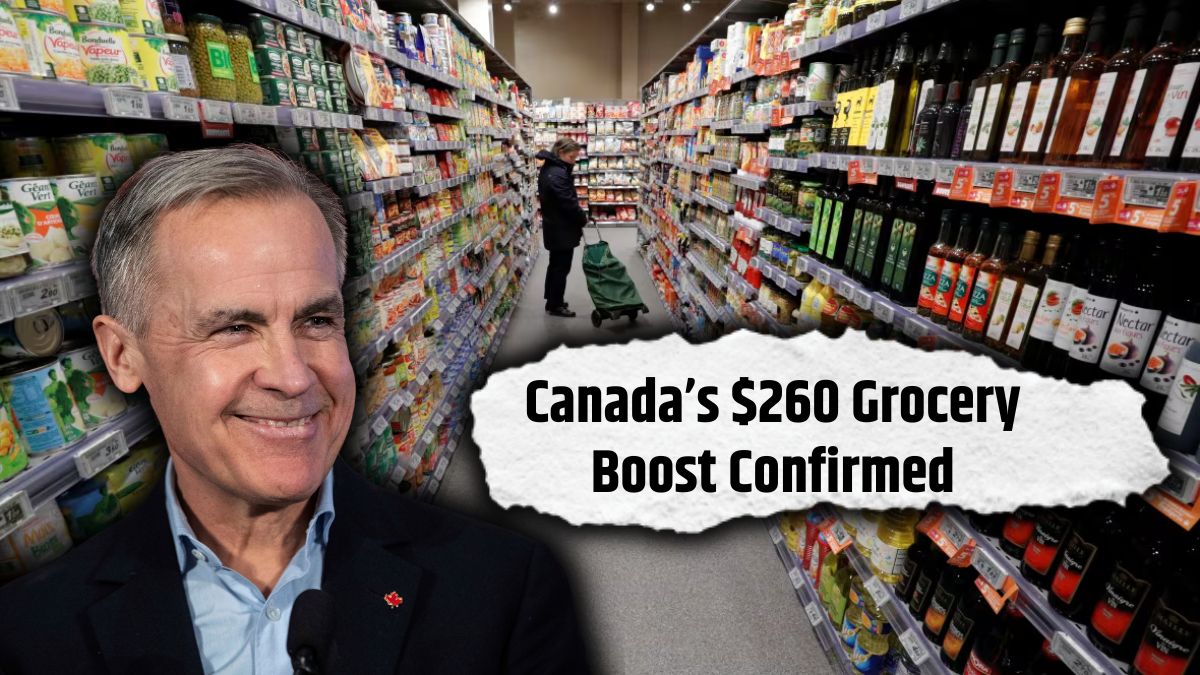Between December 14, 2024, and June 2025, millions of Canadians unknowingly benefited from a temporary tax relief on everyday purchases. This government initiative, designed to support citizens during the holiday season and inflation surge, lowered or removed GST/HST taxes on a wide range of essential items. The result? Savings of up to $260 per household—without needing to apply or submit a single form.
As the program has now ended, its impact—and the smart spending habits it encouraged—are worth a closer look.
What Was the $260 Grocery Tax Relief Program?
The temporary measure was a federal tax exemption implemented by the Government of Canada to help Canadians manage rising living costs. It involved removing or reducing GST (Goods and Services Tax) and HST (Harmonized Sales Tax) on essential goods and services, with the goal of easing financial pressure during the holidays and beyond.
The program was automatically applied at checkout, in-store and online, requiring no paperwork or registration from consumers.
Understanding GST and HST: Why It Matters
GST (5%) is a federal tax applied uniformly across Canada on most goods and services. In some provinces—such as Ontario, Nova Scotia, and Prince Edward Island—the GST is merged with provincial taxes to create HST, with a rate ranging from 13% to 15%.
While some basic grocery items are already tax-exempt, other everyday essentials like prepared food, children’s clothing, and books typically include GST/HST. The temporary tax relief reduced prices across these categories, allowing direct and noticeable savings for consumers.
How Much Could Canadians Actually Save?
The savings varied based on location and spending patterns, but real examples show just how impactful the program was:
- In HST provinces (like Ontario or Nova Scotia):
Families spending $2,000 on children’s clothing, dining, and seasonal goods could save up to $260. - In GST-only provinces (like Alberta or British Columbia):
Similar spending could yield savings of around $100.
Importantly, no special effort was required from shoppers. The discounts were applied automatically by retailers at checkout, both online and in stores.
Which Items Were Covered Under the Tax Relief?
The scope of eligible products was intentionally broad, targeting categories most relevant to families, seniors, students, and working professionals. Covered items included:
- Children’s clothing and footwear
- Baby products like formula and diapers
- Prepared meals and restaurant food
- Holiday gifts, toys, and decorations
- Books and newspapers
- Home essentials such as hygiene products
However, the program excluded luxury goods, alcohol, and tobacco—ensuring the benefit focused solely on everyday necessities.
Why This Relief Was Especially Meaningful
The tax break wasn’t just a policy decision—it had a direct financial impact on diverse segments of the population:
For Families
Rising prices for children’s goods, winter wear, and baby supplies had stretched household budgets. The tax relief helped ease these burdens during the high-spending holiday season.
For Working Professionals
Dining out, commuting, and purchasing holiday gifts became more affordable, helping workers manage their expenses amid inflation and interest rate hikes.
For Students and Seniors
The tax cut made books, meals, and warm clothing more accessible, especially for those living on fixed incomes or tight budgets.
Smart Spending Lessons That Last Beyond the Tax Relief
Although the GST/HST discount ended in June 2025, the savvy shopping habits it inspired can still help Canadians save money year-round:
- Use weekly flyers to track grocery and household item discounts.
- Shop at discount retailers and bulk stores like Costco or No Frills.
- Take advantage of price-matching policies at major stores.
- Use cashback apps such as Checkout 51, Rakuten, or Caddle.
- Watch for seasonal clearance events, tax-free days, and loyalty program perks.
- Stay informed about new government programs and rebates.
These strategies, combined with planned spending, can continue to offer financial relief, even in the absence of formal tax breaks.
Conclusion: Relief That Sparked a Mindset Shift
The $260 grocery boost through Canada’s temporary GST/HST relief might be over, but its long-term impact remains significant. By reducing the cost of everyday goods at a critical time, the program not only delivered immediate savings but also encouraged more intentional, value-driven shopping.
If Canadians continue to apply the lessons learned—from tracking deals to buying strategically—they can protect their wallets far beyond the tax holiday window. Inflation may persist, but so can smarter consumer habits.
FAQs on $260 Grocery Boost for Canadians
Q1. What was the GST/HST relief period in Canada?
A. From December 14, 2024, to June 2025.
Q2. How much could Canadians save?
A. Up to $260 in HST provinces, and around $100 in GST-only provinces, based on $2,000 in eligible spending.
Q3. Did shoppers need to apply for this benefit?
A. No, the tax discount was automatically applied at the time of purchase—no forms or applications required.
Q4. Was every item eligible for the tax break?
A. No, luxury items, alcohol, and tobacco were excluded. The focus was on everyday essentials like food, clothing, and books.
Q5. Will the tax relief program return?
A. As of now, there is no confirmation of a return, but shoppers are encouraged to stay informed through Canada.ca and government updates.








